Showing 49–60 of 78 results
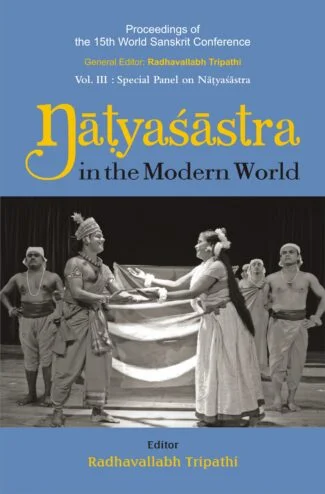
This book talks about the divergent views on Natyasastra Þ its origin, concepts, philosophy, history, vritti, impact on traditional stages, relevance in modern age and stage, and its applicability in post-modern stage. It interlinks Natyasastra and the regional theatre forms with specific focus on south India.
Natyasastra of Bharatamuni, considered as the fifth Veda, has remained a Samhita with a systematic presentation of conceptual frameworks, theories and practices of Indian theatre for a few millennium years. Every performing art of India (dancedrama) has drawn both theoretical and aesthetics values from Bharata and his Natyasastra, giving continuity to a legacy, as it was written to set models and standards for actors, artisans, and the playwrights. Natyasastras discovery in the nineteenth century was a milestone in the world history of aesthetics and theatre. The subsequent researches made Bharata and his theatre a vibrant topic of global dialogue and researches. This has resulted in the discovery of different versions of the Natyasastra.
This volume discusses in detail the divergent views on Natyasastra its origin, concepts, philosophy, history, vrtti, impact on traditional stages, relevance in modern age and stage, and its applicability in post-modern stage. It also vividly talks about the interlinks between Natyasastra and the regional theatre forms with specific focus on south India. It therefore reinstates the fact that the regional theatric traditions have considerably contributed to the restructuring of Natyasastra texts.
With deliberations on varied topics, this book proudly announces that Natyasastra is not just a text, but a tradition of theatre that has remained vibrant till today, reminiscent of Indian world-view. And this makes this volume a must-study for ßwho is whoû in the theatric domain.
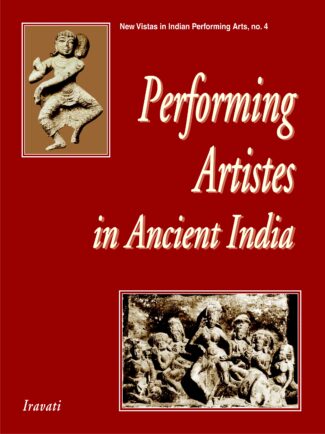
The book studies the evolution of ancient Indian theatre: it deals with the dramatic troupes, abhinaya, the stage and auditorium and visuals depicting scenes etched on temples and caves. It examines the kinds of performing artistes and their contributions.
Theatre in ancient India or natya incorporated various aspects of art and different branches of knowledge in its very definition not only histrionics but also dance, music and fine arts and branches of learning like history, philosophy and science. This work traces the evolution of the ancient Indian theatre, focusing on the contributions of the performing artistes. This scholarly treatise deals at length with aspects of dramatic performance like nature, kinds and members of dramatic troupes, abhinaya, the stage and auditorium, incorporating a number of visuals to depict the dramatic scenes etched by artists on pillars, temple walls, caves and objects. It classifies the different kinds and levels of performers: actors like Sailusa, Sailalin, Mankh Kusilava, Nata and Bharata, and actresses like professional actresses, courtesan actresses, divine actresses and so on. It refers to Natyasastra and other noted works on dramaturgy and their authors, and gives examples and illustrations from the famous epics, Buddhist and Jain literature and other works like the Arthasastra to throw light on values associated with drama and its actual performance in ancient times. The book, presenting well-researched facts and giving an insightful analysis, will prove useful to researchers and teachers of classical Indian art.
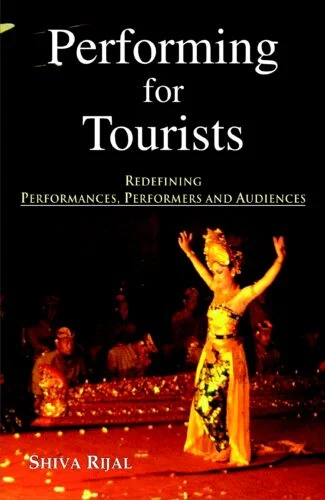
The book is a study of traditional Balinese performance culture with special focus on dance and drama forms thriving in the present, their links with tourists, the economy of performing for tourists, and the role of state-run institutions in the performance culture.
This book is about the culture of performing traditional dance, drama and musical forms for tourists, and is based on the research carried out at Ubud (Bali/Indonesia). This book argues that the achievements made by the custodians of the Balinese performance culture in Ubud need to be given a greater consideration because of: (a) existence and condition of traditional dance, drama and musical forms in several geo-cultural spaces throughout the world, (b) emergence of eco-cultural tourism, and (c) exigency of practising art and knowledge of performing and managing traditional dance and drama forms in changed social and cultural contexts.
This book argues that religious and cultural faith associated with certain traditional dance, drama and musical forms alone cannot help the later ones to flourish in their multiple forms. To carve out a secure future for such cultural art forms, individual talents need to invent and intervene from within.
This book makes a suggestion that the people of the Asian countries should not only live with feelings of sharing similar traditional art forms of the olden days but should also look at the present reality of the times when transformations are taking place in such traditional art forms because of the cross-cultural movements of people, especially those of the tourists.
Cover illustrations
Front: A moment when audiences find themselves intensely watching a performance.
Back: A board mentioning about the schedule for performance put in front of the Banjar building in the Monkey Forest area.

This book is a systematic and contemporary exploration of the uniquely Indian phenomenon of raga, which forms the foundation of the musical culture of India. It attempts to extend the scope of the enquiry to cover several facets of ragas examining the manner in which they participate in the cultural process.
This book is a systematic and contemporary exploration of the uniquely Indian phenomenon of raga, which forms the foundation of the musical culture of India.
Maestros speak with total conviction of a raga as having a personality. A raga must therefore be viewed not only as the governing authority of musical performance, but also as an archetype pregnant with cultural meaning. The exploration of raga-ness, therefore, can begin with the grammatical coordinates of ragas, but cannot stop there. This book attempts to extend the scope of the enquiry to cover several other facets of ragas examining the manner in which they participate in the cultural process. As such, this book provides valuable insights to scholars, researchers, connoisseurs, as well as performing musicians.
Written by an author of established credentials as a musician, researcher and writer with three acclaimed works to his credit, this book explores the subject through conceptual essays in Part I, and case studies of fifty-one ragas in Part II. The case studies of ragas are supported with references to authoritative texts and reviews of recordings by recent and contemporary maestros.
Written in the author’s lucid and masterly style, this book makes complex musicological concepts accessible to non-academic readers, and contributes significantly to widening the understanding of the role of ragas in the musical culture.
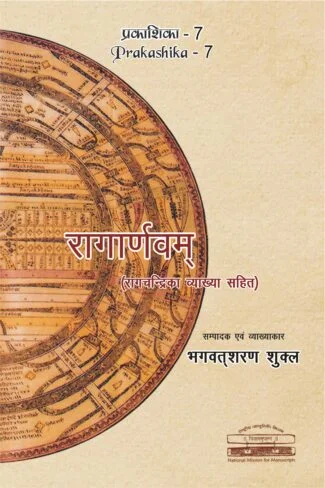
This composition of the sixteenth century, edited and commentated upon by Acharya Bhagawat Sharan Sukhla, introduces eighty-seven ragas, some are famous such as Bhairav, Bhairavi, Vasant, Tohri and Malkauns, and some are little known like Rodika, Saurashtri, Aothi, Yogi Bangalika and Kurai. It is part of the ongoing efforts of the National Mission for Manuscripts, giving exposure to the unpublished Sanskrit volumes.
The experiences and knowledge from our past are recorded in manuscripts which have been handed down to us over several thousand years. The Government of India, through the Department of Culture, took note of the importance of the vast tangible heritage and in order to preserve and conserve as well as to make access to this wealth easy, established the National Mission for Manuscripts. In order to disseminate the knowledge content of manuscripts, the Mission has taken up several programmes such as lectures, seminars and workshops. The Mission has published the proceedings of the above-said programmes under the following series: Samrakshika (on conservation), Kritibodha (critically edited texts), Tattvabodha (comprises lectures based on some manuscripts delivered by eminent scholars) and Samiksika (research-oriented papers as presented in the seminars). This year, the National Mission for Manuscripts has taken up a project for publishing rare and unpublished manuscripts in three formats (a) Facsimile, (b) Critical edition (illustrated and single copy manuscript), (c) Critical edition with annotation and translation. This new series has been named as Prakashika. Ragarnavam, critically edited by Acharya Bhagawat Sharan Shukla, comes under this series.
The happiness from the knowledge of music is well-known. From the very beginning of creation, music was the part and parcel of human civilization. Its relevance to our lives is known from the Vedic period. Besides nataka, Rishi Bharata is considered as the acarya of music too. To enrich this knowledge, many saint-composers devoted themselves to shastraic compositions. Ragarnavam is one of such compositions. Though no details are available on the compositor, this work is a sufficient proof of the composer’s mastery.
Ragarnavam, it is believed, was composed somewhere in the sixteenth century. It is a collection of eighty lyrics. Acharya Bhagawat Sharan Shukla has edited and written commentary on it, in the backdrop of the two available manuscripts of this composition. This composition introduces nearly eighty-seven ragas some are famous, some are little known. While this composition details famous ragas like Bhairav, Bhairavi, Vasant, Torhi, and Malkosh, it features ragas like Rodika, Saurashtri, Aothi, Yogi Bangalika, Kurai, as well.
This book will definitely be a boon to the music lovers. It can even entice researchers on music. This volume is part of the ongoing efforts of the National Mission for Manuscripts, giving exposure to the unpublished Sanskrit volumes.

Dr. Patnaik elucidates the fundamentals of the rasa theory and applies the canons of this theory to various modern Western literary works, Chinese love lyrics and the Japanese haiku poems. Its historical development and recognition are discussed.
The Indian tradition of criticism is over two millennia old. And its rasa theory has, from the beginning, essentially influenced authors, connoisseurs and art critics alike. First expounded sometime between the 1st century bc and the fourth century AD in the eminent aesthetician, Bharata’s Natya Shastra, rasa theory deals with the ‘emotive content’ of a work of art — how it is depicted, inferred and transmitted. Dr. Patnaik’s book is a unique effort that demonstrates, with diverse examples, the universality of this ancient theory and its applicability to modern Western classics. Elucidating afresh the concept of rasa and all its nine primary kinds largely on the basis of Natya Shastra of Bharata and the commentaries of the tenth-century aesthetician, Abhinavagupta, the book investigates the validity of rasa theory as an aesthetic, more specifically, a literary theory, and how its canons are applicable to modern Western literature as well as Chinese love lyrics and Japanese haiku poems. Dr. Patnaik’s transcultural exploration, thus, covers all major genres of literature — poetry, drama and fiction; and also major writers — Lawrence, Mayakovsky, Kafka, Camus, Conrad, Hemingway, Faulkner, Marquez, Eliot, Hesse, O’Neill, Ionesco, Beckett, Lorca, Neruda and several others. In emphasizing the universal validity of the rasa theory, the author considers certain modern problems relevant to text, meaning and readers’/audiences’ response as well. Very few are the examples of applied rasa theory even in Sanskrit and other Indian literatures, leave alone its application to Western creative writing. This book, with its bold framework and lucid style, should, therefore, fascinate the scholars of Indology, Indian aesthetics and, above all, comparative literary criticism.

Dr. Patnaik elucidates the fundamentals of the rasa theory and applies the canons of this theory to various modern Western literary works, Chinese love lyrics and the Japanese haiku poems. Its historical development and recognition are discussed.
The Indian tradition of criticism is over two millennia old. And its rasa theory has, from the beginning, essentially influenced authors, connoisseurs and art critics alike. First expounded sometime between the 1st century bc and the fourth century AD in the eminent aesthetician, Bharata’s Natya Shastra, rasa theory deals with the ‘emotive content’ of a work of art — how it is depicted, inferred and transmitted. Dr. Patnaik’s book is a unique effort that demonstrates, with diverse examples, the universality of this ancient theory and its applicability to modern Western classics. Elucidating afresh the concept of rasa and all its nine primary kinds largely on the basis of Natya Shastra of Bharata and the commentaries of the tenth-century aesthetician, Abhinavagupta, the book investigates the validity of rasa theory as an aesthetic, more specifically, a literary theory, and how its canons are applicable to modern Western literature as well as Chinese love lyrics and Japanese haiku poems. Dr. Patnaik’s transcultural exploration, thus, covers all major genres of literature — poetry, drama and fiction; and also major writers — Lawrence, Mayakovsky, Kafka, Camus, Conrad, Hemingway, Faulkner, Marquez, Eliot, Hesse, O’Neill, Ionesco, Beckett, Lorca, Neruda and several others. In emphasizing the universal validity of the rasa theory, the author considers certain modern problems relevant to text, meaning and readers’/audiences’ response as well. Very few are the examples of applied rasa theory even in Sanskrit and other Indian literatures, leave alone its application to Western creative writing. This book, with its bold framework and lucid style, should, therefore, fascinate the scholars of Indology, Indian aesthetics and, above all, comparative literary criticism.
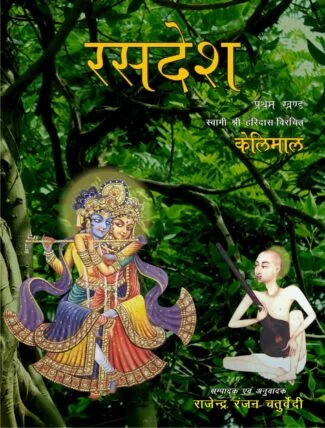
?????: ??????????????? ?? ?? ??????, ???? ??? ????? ?? ????? ?? ???? ??, ???? ??? ?? ?????? ????? ?? ???? ?? ???? ???? ?? ????? ???? ?? ?? ????? ???????? ?? ?????-???? ??, ??????? ????? ??????? ?????? ?? ???? ???? ???? ??, ??????? ?????? ??????? ??? ??? ?? – ?????? ??????? ?? ????? ?????? ???? ?????-??????? ??? ??? ???? ??????? ?? ????????? ?? ?? ?? ??? ??? ????? ???? ????? ?? ????? ??? ?? – ???????-????????
??????????????? ?? ?? ??????, ???? ??? ????? ?? ????? ?? ???? ??, ???? ??? ?? ?????? ????? ?? ???? ?? ???? ???? ?? ????? ??????? ???????? ?? ??? ??, ??? ???????? ?? ???? ?? ?????????? ???? ???? ???? ???????? ?? ???????, ???????, ?????????? ?? ????????????? ?? ????? ???? ?? ?? ????? ???????? ?? ?????-???? ??, ??????? ????? ??????? ?????? ?? ???? ???? ???? ??, ??????? ?????? ??????? ??? ??? ?? µ ?????? ??????? ???????? ?? ??????? ??? ????? ???? ??? ?????? ???????? ???? ??? ??? ?????? ???? ???? ??? ???? ???? ???? ??? ?? ????? ?????? ???? ?????-??????? ??? ??? ???? ??????? ?? ????????? ?? ?? ?? ??? ??? ????? ???? ??????? ?? ???????? ?? ?????? ?? ???? ??????? ?? ??? ??? ?????? ???? ??????? ??? ????? ?? ????????? ?? ???? ??? ??? µ ??? ?? ??? ??? ???, ??? ?? ?????? ??? ? ??? ?????

This book is the critical edition of Nutanatarivyakhya, a remarkable commentary by Bhagavatkavibhatta on Rasatarangini, a famous treatise of Bhanudatta on rasa theory. This is an attempt to introduce a versatile but unknown scholar who lived between eighteenth and nineteenth century in Gujarat.
The experiences and knowledge from our past are recorded in manuscripts which have been handed down to us over several thousand years. The Government of India, through the Department of Culture, took note of the importance of this vast tangible heritage and, in order to preserve and conserve as well as to make access to this wealth easy, established the National Mission for Manuscripts (NMM). In order to disseminate the knowledge content of manuscripts, the NMM has taken up several programmes such as lectures, seminars and workshops. NMM has published the proceedings of the above-said programmes under the following series: Samrakshika (on conservation), Tattvabodha (comprising lectures based on manuscripts delivered by eminent scholars), Samikshika (research-oriented papers presented in the seminars), and Kritibodha (transcribed and edited texts prepared at advanced level manuscriptology workshops conducted by NMM).
NMM has taken up a project for publishing rare and unpublished manuscripts in three forms: (a) facsimile, (b) critical edition with annotation, and (c) critical edition with translation. This series has been named as Prakashika. This volume, is twenty-eighth in the Prakashika Series.
This book is the critical edition of Nutanatarivyakhya, a remarkable commentary by Bhagavatkavibhatta on Rasatarangini, a famous treatise of Bhanudatta on rasa theory. Bhagavatkavibhatta was a learned shishya of Ashadharabhatta, a renowned scholar on poetics from Gujarat. The Nutanatari is found in a single manuscript preserved in Oriental Institute, Baroda. It presents Nutanatari along with Rasatarangini text corresponding to the commentary, an introduction and elaborate notes. This is an attempt to introduce a versatile but unknown scholar who lived between eighteenth and nineteenth century in Gujarat, and thus to throw light on the meritorious contribution of Gujarat to Sanskrit Shastric literature.

The book objectively revisits the widely discussed issues pertaining to colonialism, post-colonialism, literary criticism and aestheties in India and not only critiques their constructs but also comes up with alternative constructs in the backdrop of Indian realities as manifested in creative and critical terms.
The declining decades of the 20th century witnessed discussion of various issues pertaining to colonialism, postcolonialism, literary criticism and aesthetics in India. The present book in its four parts Word, World and Perception, Colonialism and After, Literature and Theorizing in India, and Criticism and India deals with them and ancillary issues; and in the process of revisiting them not only critiques their constructs but also proposes alternative constructs in the context of Indian realities and their manifestations in creative and critical terms.

It looks into specific cultural formation of Teyyam. It re-frames and interprets various myths of mother-goddesses and hero-deities by situating them in the historical conditions in which they originated and explores from a sociological perspective how the ritual functions as ideology.
Teyyam, the spectacular ritual dance widely performed in north Kerala, has its distinct forms of visual and verbal expression. However, what was once expressed through the distinctly indigenous forms of this religious other no longer remains the same, as the specificities of meaning and messages as encoded in the whole structure of its ritual performance were levelled out and superceded by the ideological laundering of caste Hinduism. RITUAL AS IDEOLOGY looks into the specific cultural formation of teyyam it re-frames and interprets various myths of the mother-goddesses and hero-deities by situating them in the historical conditions in which they originated. Based on a study of the myths at a micro-structural level, the book explores from a sociological perspective how the ritual functions as ideology, apart from its cultic or religious significance. The study also unfolds and explains the gender disparity between the archetypal Female Devourer and her Male Victims, the recurrent motifs in the myths related to various manifestations of the Terrible Mother in teyyam. The study thus acquires contemporary significance in the face of cultural authoritarianism that in its design of appropriation attributes the village pantheon of every little tradition to canonical Hinduism, a process that has been so rife in todays cultural politics.
| There are no products |